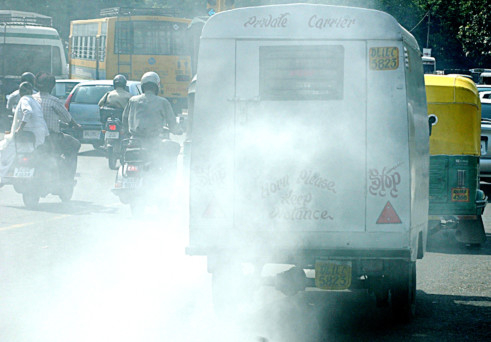
The United Nations Framework Convention on Climate Change (UNFCCC) Conference of Parties (Cop) meeting to be held in Paris (COP-21) this December is expected to establish a new international agreement on climate change. The bone of contention lies in the differentiation and sharing of the remaining carbon space in order to avoid catastrophic warming. China and the US, which are the world’s largest carbon dioxide (CO2) emitters, have recently announced an agreement to restrict emissions by 2030.
The question now is what could be India’s strategy in the Paris negotiations? Most recent discussions on the subject appear to assume that India’s development aspirations go hand in hand with increasing carbon emissions.
In a recent study, we (at Bengaluru’s Centre for Study of Science Technology and Policy — Cstep) have framed the question differently. We have assumed that the overall vision of India is “sustainable development”. Can we achieve our vision of providing equitable access to energy, clean air and water, food, health and livelihoods, while expanding the economy? We further assume that there are no restrictions on CO2 emissions in achieving India’s development aspirations. In the initial analysis towards such a long-term study, we have used inclusivity, energy security, efficiency and health as the cornerstones of a future energy policy.
Inclusivity means that all rural and urban households would have access to modern energy sources and electricity. In addition, there should be a minimum threshold supply to all households.
Energy security implies that India’s energy system should not be vulnerable to potential disruptions in fuel supply due to geopolitical reasons. At present, India imports most of its oil and it may not have any significant alternatives in the near future. Moreover, even its electricity production is increasingly dependent on imported fuel as imports of coal, uranium and natural gas are increasing continuously. The price of imported coal is volatile and at least two to three times more than that of domestic coal. The government has recently announced plans to double coal production capacity to 1,000 million tonnes by 2020. Our estimates suggest that even this will not be sufficient to meet India’s power sector’s demand by 2030 if it stays as coal-heavy as it has been so far. While it may not be possible to eliminate imports, it would be prudent to keep imports within limits.
In our scramble for energy generation, we tend to underestimate the health impact of pollutants emitted from thermal power plants, vehicles and biomass. Thermal power generation, from coal in particular, leads to emissions of particulate matter (PM), sulphur dioxide (SO2) and oxides of nitrogen (NOx). At present, India has standards for regulating PM emissions. However, there are no regulations for SO2 and NOx. In the absence of future regulations, emissions of these pollutants are set to increase by at least three-to-four fold by 2030 — and this will have disastrous effects on urban and rural air quality. Sooner or later, India will have to impose stricter regulations for emissions from thermal power plants and motor vehicles. India cannot afford to go China’s way in air quality.
Cstep has developed future energy trajectories that show that if it wants to achieve the four cornerstone policy objectives mentioned above, 40-50 per cent of India’s electricity generation will have to come from fossil-free sources by 2030. For comparison, at present, about 23 per cent of India’s electricity comes from fossil-free sources. Further, the share of renewable sources, excluding large hydro projects, will increase to about 20 per cent in 2030 from about 6 per cent at present. Similarly, for the energy sector as a whole, about 13-15 per cent of the total energy will have to come from fossil-free sources (excluding non-commercial biomass), as against 4 per cent at present.
Interestingly, the pathways that achieve these societal objectives also turn out to generate lower CO2 emissions. It is important to realise that these transformations happen without imposing any restrictions on CO2 emissions. Instead, these are driven by the aspirations of inclusivity, energy security, cleaner air, and a shift to sustainable development.
India, therefore, has the opportunity to carve a unique developmental trajectory that ensures quality of life to its citizens without locking itself into a high-emissions pathway. The question is not whether India should target its per capita CO2 emissions to be comparable with those of China or the US. Instead, we should ask what India should do to achieve a sustainable and good quality of life for all its citizens. This could serve as an alternative development paradigm for other developing countries as well. And this could be India’s distinctive contribution at Cop-21.
— IANS
Sujatha Byravan, Amit Kanudia and Arushi Sen are with the Centre for Study of Science Technology and Policy (Cstep), Bengaluru.










